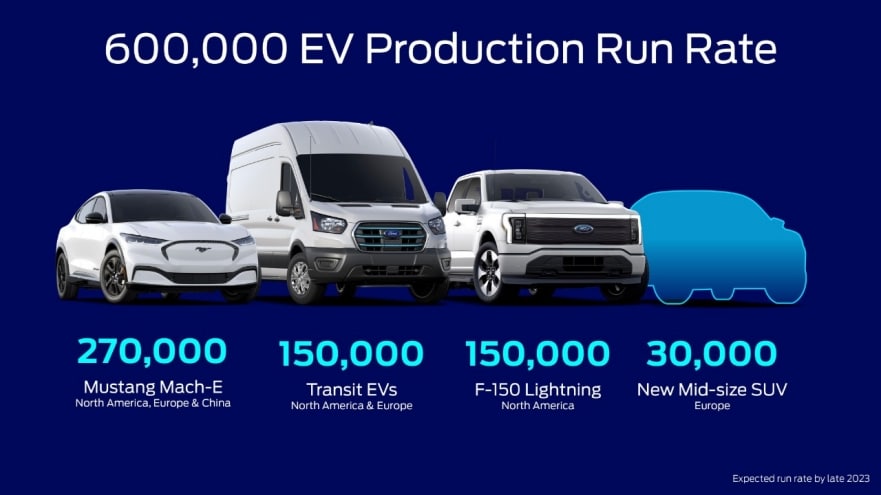Ford is lowering its 2023 EV production targets, pointing to vehicle prices as a reason for the slowdown.
The automaker now expects to be building 600,000 EVs a year sometime in 2024, Ford CEO Jim Farley said Monday in a discussion of the automaker’s quarterly earnings report. Ford has been saying since 2021 (when it doubled EV targets) that it would attain that rate by the end of this year.
Ford at the time said it aimed to become the second-biggest EV producer in the world “within a couple years.” Similar language was missing from Farley’s comments, but he did say Ford “will maintain flexibility, balancing growth and profitability, on the way to attaining a two-million run rate” in the coming years.

Ford Mustang Mach-E assembly – Mexico
Farley said more than 30% of consumers intended to buy an EV, but that purchase prices are hold many potential customers back, according to The Washington Post.
“There are plenty of customers,” Farley said. “The issue is, the price they are willing to pay has come down. But it’s very, very lumpy. It’s not consistent across all segments.”
Farley himself pointed to the start of an EV price war earlier this year. So is Ford not making EV prices competitive enough? And is there anything in the automaker’s product plans that could rectify that?

Ford plans 600,000 annual EV production by late 2023
Ford pointed to LFP batteries as an important part of its strategy, and gave an update on its portfolio and EV goals last summer. At the time, the automaker said it expected to be building 270,000 Mustang Mach-E crossovers annually for North America, Europe, and China by late 2023; 150,000 F-150 Lightning pickups for North America; 150,000 E-Transits for North America and Europe; and 30,000 units of “an all-new SUV for Europe, whose run rate will significantly ramp in 2024.”
Further out, Ford is developing a next-generation full-size electric truck designed to be built in “incredibly high volume,” Farley has said. Expected to be a replacement for the F-150 Lightning, the truck should arrive around 2025 alongside a a three-row SUV that Ford has promised will get 350 miles of range from a modestly sized battery pack.

